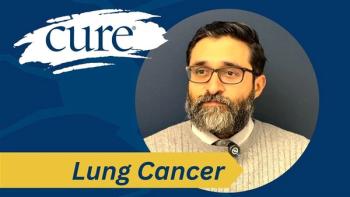
Early Non-Small Cell Lung Cancer: Chemotherapy and Toxicity
Martin Dietrich, MD, PhD, describes the toxicity profiles of chemotherapy agents used in the adjuvant setting in early non-small cell lung cancer.
Episodes in this series

Martin Dietrich, MD, PhD: One of the biggest pieces of progress that oncology has made is in its handling of toxicity. The adverse effect profiles from the movies where patients are vomiting and hanging over a bucket, I think this has gotten a lot better. This is part of what instills a lot of fear in using chemotherapy. And the patients that have made up their mind about chemotherapy before they come to my clinic are oftentimes influenced by these images. I can tell you, there’s no other field that has gotten more attention in oncology than what we call supportive care. The first hour and a half of a treatment with chemotherapy is basically the infusion of medications that are preempting and the development of nausea and vomiting. And in fact, especially with these lung cancer regimens, I haven’t seen much nausea or vomiting at all. We’ve gotten very good; there are many different medications that can be utilized. And in fact, they probably use them in combination, or sometimes in all of them. And that’s a big part. In terms of concern for [side effects], the one that always scares us is the reduction in white blood cell counts and the development of fevers and infectious complications. That is something for which we have growth factors, that stimulate the bone marrow to produce white blood cells and can maintain the defenses. Low white blood cell counts are a medical emergency in setting of infection and should be prevented to the best extent possible. But now, when you have a patient only receiving, and this is the typical number of what we call a cycle or rounds of chemotherapy, of 4 cycles of chemotherapy, we can arrange a close watch to make sure that we can trend the numbers of white blood cells and treat either preemptively in patients at risk or in close, reactive nature if a patient’s white blood cell count is starting to drop. We have a clear signal that chemotherapy is indicated, the risk of recurrence is high, the survival is improved with adjuvant chemotherapy, and the toxicity profiles have gotten substantially better. In fact, this is one of the things that patients oftentimes come back to me and say, “Well, I didn’t expect this to be this manageable.” I’m not saying it is easy. I’m not saying it’s pleasant. Nobody would sign up for this voluntarily, but in the setting of high-risk disease, toxicity management has changed in our approach to how we can recommend therapy. Rest assured that what you are recommended when you’re getting adjuvant chemotherapy is based on data for almost all resected tumors, unless you’re looking at a stage 1a or a tumor that is in the lowest risk category of size and extent of spread.
Transcript edited for clarity.







